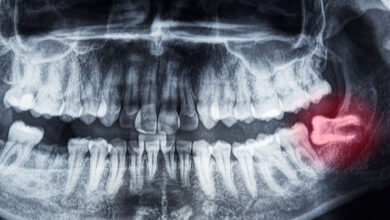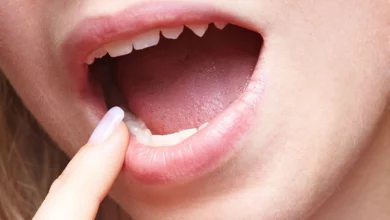How to Reduce Swelling After Wisdom Teeth Removal

Table of Contents
How to Reduce Swelling After Wisdom Teeth Removal
Wisdom teeth removal is a common dental procedure that can lead to swelling and discomfort in the days following the surgery. Swelling is a natural part of the healing process, but there are several steps you can take to minimize it and promote a faster recovery. In this article, we will discuss effective strategies to help you get rid of swelling after wisdom teeth removal, along with some frequently asked questions to address common concerns.
1. Apply Ice Packs:
One of the simplest and most effective ways to reduce swelling is by applying ice packs to the affected area. Ice helps constrict blood vessels and reduces inflammation. Place an ice pack wrapped in a thin cloth on the outside of your cheek for about 15 minutes at a time, with short breaks in between. Repeat this process several times a day for the first 24-48 hours after the surgery.
2. Take Prescribed Medications:
Your dentist or oral surgeon may prescribe pain relievers and anti-inflammatory medications to manage swelling and discomfort after the procedure. It’s essential to follow their instructions carefully and take the medications as prescribed.
3. Use Saltwater Rinse:
Rinsing your mouth with warm saltwater can help reduce swelling and prevent infection. Mix half a teaspoon of salt in a cup of warm water and gently swish it around your mouth, being careful not to spit or rinse forcefully. Repeat this rinse 2-3 times a day, starting from the day after the surgery.
4. Elevate Your Head:
Keeping your head elevated while resting or sleeping can help minimize swelling. Use an extra pillow or two to elevate your head above your heart level. This position helps reduce blood flow to the surgical site and decreases swelling.
5. Stick to Soft Foods:
Avoid hard, chewy, or spicy foods in the days immediately following your wisdom teeth removal. Opt for soft foods such as soups, yogurt, mashed potatoes, and smoothies. Gradually introduce more solid foods into your diet as you heal.
Wisdom Teeth X-ray: A Key Step in Dental Care
If you’re experiencing dental discomfort or planning for oral surgery, your dentist may recommend a wisdom teeth x-ray. Wisdom teeth, also known as third molars, are the last teeth to emerge, typically appearing between the ages of 17 and 25. However, due to limited space in the mouth, these teeth often cause problems and require removal.
The x-ray reveals various conditions that may necessitate wisdom teeth extraction. Impacted wisdom teeth occur when the teeth don’t fully erupt and remain partially or completely trapped beneath the gum line. This can lead to pain, infection, gum disease, and damage to neighboring teeth.
The x-ray also allows the dentist to determine the angle at which the wisdom teeth are growing. If they are angled towards nearby teeth or the back of the mouth, it can result in crowding, misalignment, or damage to adjacent teeth. Additionally, the x-ray helps identify any potential cysts or tumors that may develop around the wisdom teeth.
During the x-ray procedure, you will be asked to stand or sit in front of the imaging device. The technician will position your head and guide you to bite down on a special holder to ensure proper alignment. The machine will then rotate around your head, capturing the necessary images in a matter of seconds. It is a quick and painless procedure, with minimal exposure to radiation.
Once the x-ray is taken, your dentist will carefully analyze the image to make an informed decision about the best course of action. In some cases, extraction may be recommended even if the wisdom teeth aren’t causing immediate issues to prevent potential problems in the future. Extraction is often easier and less complicated in younger patients, which is why wisdom teeth x-rays are commonly performed during the late teenage years or early adulthood.
Frequently Asked Questions:
Q1: How long does the swelling after wisdom teeth removal last?
A1: Swelling usually peaks within the first 48 hours and gradually subsides over the next few days. Most swelling should resolve within a week.
Q2: Can I use heat packs instead of ice packs?
A2: It’s generally recommended to use ice packs in the initial stages to reduce swelling. Heat packs can be used after 48 hours to help relax muscles and increase blood flow.
Q3: Is it normal to have some bruising after the surgery?
A3: Yes, mild bruising may occur after wisdom teeth removal. It typically resolves within a week or two.
Q4: When should I contact my dentist or oral surgeon about excessive swelling?
A4: If you experience severe or increasing swelling, intense pain, persistent bleeding, or any other unusual symptoms, contact your dentist or oral surgeon immediately.
Conclusion:
While swelling is a normal part of the healing process after wisdom teeth removal, following these tips can help minimize discomfort and promote a faster recovery. Remember to consult with your dentist or oral surgeon for personalized advice and guidance. With proper care, you’ll be on your way to a smooth and comfortable recovery.
References:
- Mayo Clinic: Wisdom Teeth Removal – What You Can Expect [https://www.mayoclinic.org/tests-procedures/wisdom-tooth-extraction/about/pac-20395268]
- WebMD: Wisdom Teeth Removal: What Adults Should Expect [https://www.webmd.com/oral-health/wisdom-teeth-adult]
Also, Read:
- Wisdom Teeth X-Ray: What you need to Know
- Sideways Wisdom Teeth: Causes, Pros, and Cons
- The Benefits of Keeping Wisdom Teeth: Debunking Common Myths
- Sore throat after wisdom teeth removal
- How to Reduce Swelling After Wisdom Teeth Removal
- What happens if you don’t get your wisdom teeth removed?
- Can wisdom teeth cause headaches? 3 ways!
- Everything you need to know about the Wisdom Teeth



